They put a concentration camp in a tourist town. The gas chamber went next door to the local restaurant, from which patrons could watch the march of the damned. The barracks were a few minutes away from what had been a ski slope.
Struthof is a pretty little village in Alsace in eastern France sitting atop a steep ridge that gets up to a meter and a half of snow a year. At 2,600 feet in the Vosges Mountains, it had once been an ideal setting for skiers coming from nearby Strasbourg. During World War II, that same setting was not nearly so ideal for the starving ill-clad prisoners who had to haul rocks from a granite quarry up and down the mountain all day.
I had been walking across France when I arrived. The litter of two World Wars was nothing new: In Flanders, I’d crossed the indentations of trenches and walked through battlefields where in early summer, the poppies still blow. In Luxembourg, I’d stepped into abandoned, nearly forgotten bunkers hidden in the forest overgrowth and I’d wondered how it would feel to be looking out through a slit in one of these claustrophobic concrete pillboxes, waiting for a bullet or the blast of a shell. And ever since starting my walk in Holland, hundreds of miles ago, I’d stopped at scores of town memorials and tiny little museums containing a few helmets, some tarnished medals, and a dilapidated tank or two.
I was following a trans-European path known as the Grand Randonnée 5. It entered gritty, post-industrial Lorraine (think Detroit with quiche, mirabelle plums, and fruity white wine) along the Maginot line, its fortifications still visible in the forests, and then passed to picturesque Alsace, all vineyards and mountains and quaint villages with neat tiled roofs. This is the Franco-Germanic part of France; a borderland area that over the course of centuries has belonged to both countries. During World War II, Alsace and Lorraine were annexed by Germany. Now they are French, with a German accent. You can have the best of both worlds: French wine or German beer, and when you order the Alsatian specialty, choucroute de poisson, you get fish in a French Riesling sauce served on a layer of sauerkraut.
I had seen the name Struthof in the guidebook, so I had known the concentration camp was somewhere up ahead. Now I was here, following red-and-white hiking path blazes past the gates of hell. Although “minor” by Nazi concentration camp standards — deaths numbered in tens of thousands, not millions — Struthof, like all camps, had its own patented brand of torment, in this case, brutal work in rock quarries, daunting weather conditions, and medical experiments. One of the only concentration camps in France, it is now open to the public as a memorial.
Side trips for long-distance hikers generally involve comfortable beds, good meals, laundry. This one would be different.
In Your Bucket Because…
- You want to pay respects to the victims.
- You want to try to understand the Holocaust, even though you know that’s impossible.
- Good for: Lovers of history and those who seek to understand the human condition, even at its worst.
My interest in World War II was neither casual nor incidental. In my family, World War II was THE War. My father had been a young man in occupied Czechoslovakia; my mother was a teenager in bomb-battered London. For me as a child, that war seemed much closer than it does today: Over our American dinners in an American suburb, we American kids learned about ration coupons when we didn’t want to eat something, and when we refused to go to bed at night, we heard about sleeping in the underground during air raids. I discovered the Holocaust first from books, then through the eyes of an elderly great-aunt who as a young woman had helped resettle Jewish refugees from Germany and Austria into England. As a teenager, I stumbled on the book 22 Cells in Nuremberg — the account of an American psychiatrist who examined Nazi criminals before the Nuremberg trials — and I stopped, transfixed at the centerfold photos of the architects of genocide. I stared at the faces as hard as I could, trying to see if I could tell what evil looked like. But evil only looked well-groomed and unremarkable.
Like the pretty little village of Struthof.
Hiking into Night and Fog
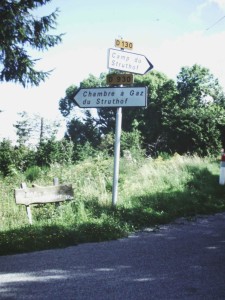
As we neared the camp, we saw signs, obscene in their ordinariness: One pointed matter-of-factly to the Struthof camp, another to the Struthof chambre à gaz, and yet another to the Struthof restaurant-bar. The disconnect I had discovered as a teenager peering at old black-and-white photos inside a book was even more jarring in real life: The account of the trial of Adolf Eichmann talks about the banality of evil — how it has an ordinary voice and an ordinary face. Here, evil was as ordinary as a cafe. That a cafe could exist alongside the gas chamber somehow made it worse.
We continued along the road to the camp. There’s a large memorial, and you can tour the actual camp itself and its remaining buildings, including the gas chamber, which you can peer into just like the guards did 70 years ago. The camp is laid out on ridge, atop a slope with a 20 percent grade — too steep to walk comfortably, even if you are fit and healthy, so try to imagine if you are starving in a granite quarry with rocks on your back. That’s why they picked this place: for the granite. The slave labor, they could import that.
The day we visited was brutally hot, the sun blazing, the humidity oppressive, like a summer day in Washington D.C. when the weathermen tell you to stay inside because it’s hot enough to kill out there. These days, most Westerners who live in uncomfortable climates don’t really feel them: We pass from air-conditioned homes to air-conditioned metro trains to air-conditioned offices. And so it was here: Most visitors arrived in air-conditioned cars or air-conditioned buses. But when you are walking 8 hours a day in 90 degree heat and 90 percent humidity, climbing mountains with a pack on your back, you feel it differently.
What I felt gave me a visceral sense of horror: The brutal temperatures, no shade in the camp, the unyielding steepness of the ridge. But I was healthy, with good gear, and a full-stomach. My well-fitted backpack did not contain rocks. My imagination wandered to other seasons. They would hardly have been better: Autumn, with its cold damp rain and fog. And the long nights of winter, with temperatures plummeting to 0 degree Fahrenheit or even below, the hard fingers of an icy wind poking through unheated barracks, tearing at filthy, threadbare blankets. The Nazis consigned members of the Resistance to “nacht und nebel.” They created that night and fog here.
In hiking, I’ve learned that the sheer physicality of long, hard miles whittles your experience down to a series of sensations: heat, aches, cold, fatigue, hunger. A healthy body feels these as challenges, but not as harmful; they can, indeed, be exhilarating, and in any event, they are utterly avoidable: Stop and call a cab. A well-equipped hiker has gear and food and strength to deal with them. For a weakened starving prisoner, the same conditions, day in day out toward infinity, would have quickly crossed the line into torture.
Confronting Evil
It’s jarringly quiet here now, like a TV show with the sound turned off. You can see the barbed wire, the watchtowers; you have to imagine the barking dogs and the stink of death and rot. I shared my reverie with perhaps a few dozen other visitors. In use, the normal population of the camp was about 2,000. In peak times, it swelled to 7,000, with hundreds jammed into each of the primitive barracks.
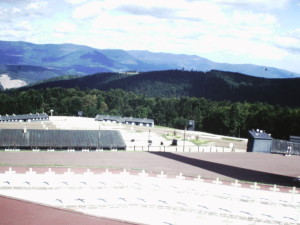
So yes, in the grand scheme of Holocaust numbers, this was a small concentration camp: “Only” 52,000 people passed through here. They were all ages — 11 to 78, according to camp records — and represented thirty different nationalities: Poles, Russians, and French, and lesser numbers of Belgians, Norwegians, Luxemburgers, Germans, Greeks, Yugoslavs, Czechs, Austrians, Lithuanians, Dutch, Italians and Slovenians. And, of course, the great triumvirate of Nazi obsession: Gypsies, homosexuals, and Jews.
22,000 died.
It gets worse. Worse than death? Well, yes: Those medical experiments, lots of them, performed by the good scientists of the Reich University in Strasbourg, who were determined to prove their racial hatred had a physiological basis. They did dissections, assembled skeletons, took measurements, made notes. Some pictures remain. One, I remember, was of woman — dead; she was lying in a vat, cut in half, her insides simply sliced through as if she were a cow or a pig, but her hands outstretched from her very human body. That’s what they did here. You can still see the vats where they stored the bodies.
So the question: Why come here? Isn’t it enough to know it happened? Do we really have to see it? We are only an hour’s drive from beautiful Strasbourg with its picturesque canals and famous cathedral. In the valley below, the route-de-vin winds its lovely way through through vineyards interrupted by villages that proudly display plaques certifying that they are “villages of flowers” that have earned one, two, or three flowers, depending on their public and private floral displays. Wouldn’t we be better off with cathedrals, wine, and flowers, with smiling locals raising a beer to our health? We could talk about how cultures enrich each other as we marvel that fish on sauerkraut tastes surprisingly delicious.
But there’s something dishonest about seeing the one without the other and thinking you know anything about a place. For me, travel means experiencing the various hues of the human condition: all the hues, including the ugly ones — the pooling red of violent death; the gray loss of hope; the puke green of fear; the black despair of places like Robben Island or the House of Slavers in Senegal. And yes, concentration camps. The extraordinary evil that happened here is part of this perfectly ordinary place. I want to try to understand, even if my mind will never be able to put the restaurant and the gas chamber, the ski slope and the rock quarry, in the same mental frame.
And there is another reason to go. I do not believe that the particular, specific flavor of evil of this war has yet passed into the history of dead books and third-hand stories. Indeed, the closer I got, the less forgotten it seemed: A week or so earlier, in Lorraine, I had walked through the kind of small town where a visitor on foot gets noticed, and soon enough, I was being buttonholed by old men on the streets who wanted to tell me of their experiences in the war. They were delighted I was American. One woman told me about being a little girl when the Americans threw chocolates from their jeeps and tanks. A gentleman who owned a chateau described how it had been commandeered by the Nazis and his family deported to the Pyrenees. The chateau is now a B & B., only partly restored from the looting and damage.
“I like the Germans who visit,” the owner said genially. “I like them as individuals. It is a different time now, different attitudes. But when I hear five or six Germans together, then I get nervous. I don’t like that I feel this. And it passes. But I can’t deny it is there.”
History here lives behind people’s eyes; it lives in their memories, in the graveyards, in the names on the monuments in every town square, which are the same names of the people who serve you your morning coffee and guide you to your hotel room at night. And it exists in the air that brushes the top of a 2,600 foot ridge where all is quiet now. To visit is to not forget.
Practicalities
- Struthof is located in the Vosges mountains about 60 kilometers from Strasbourg.
- The camp is closed between Christmas and the end of February.
- The camp is called Natzweiler-Struthof, after both the resort area of Struthof and the town of Natzweiler.
- The GR-5 hiking long-distance route passes right by the front gates.
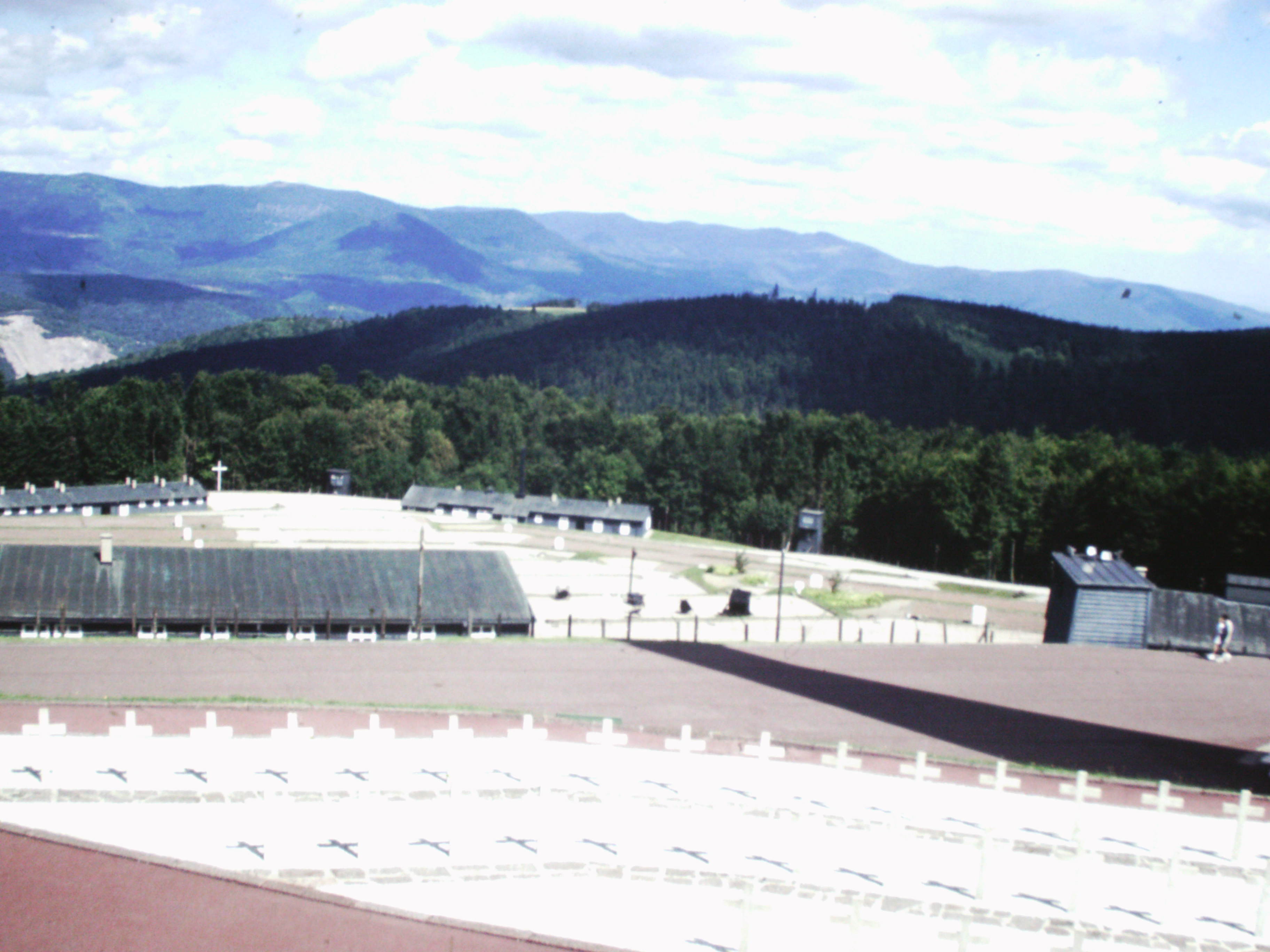
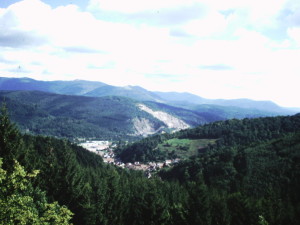
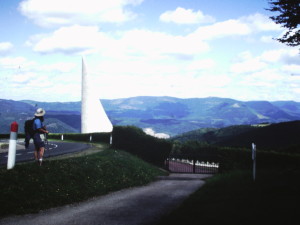
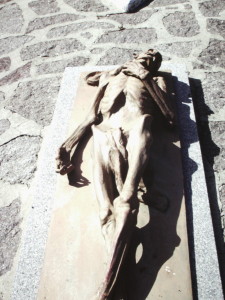
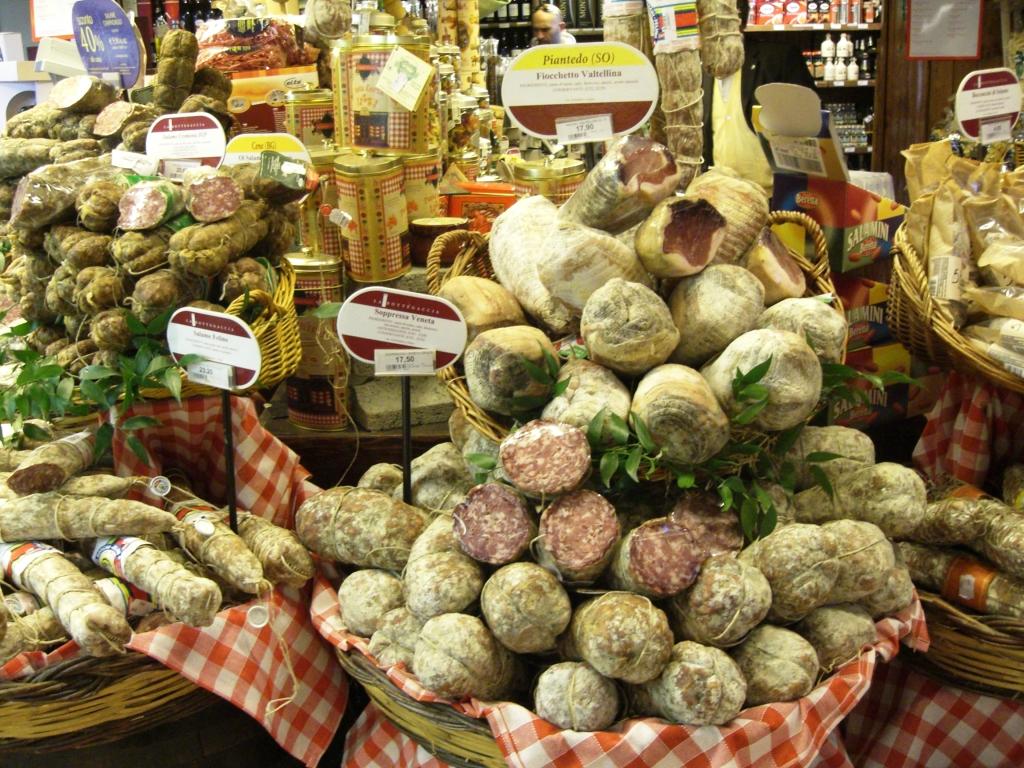
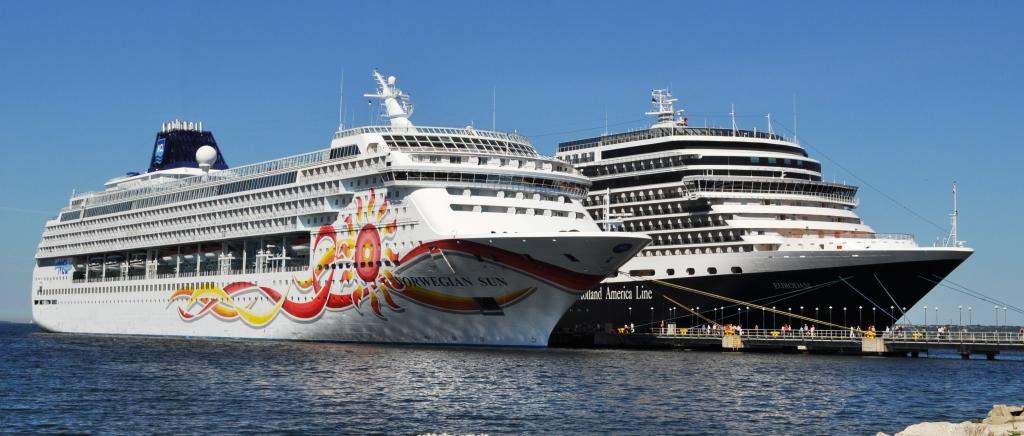
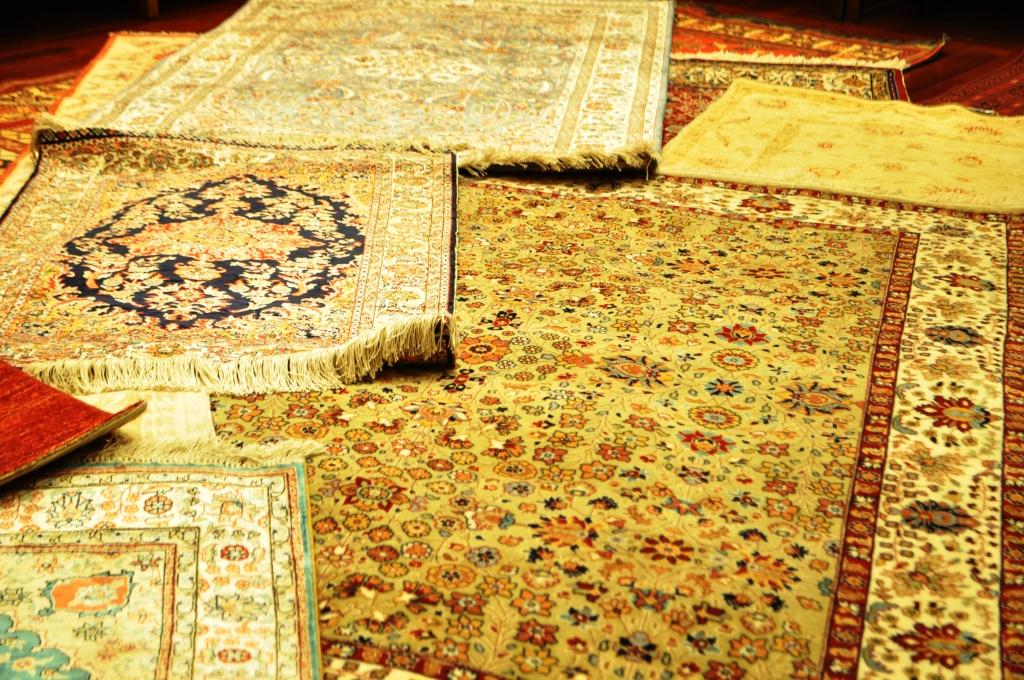
Important. My in-laws live in Alsace and made my son well aware of this place. I am thankful. Our children need to know and understand.
I think it is extremely important to visit these places. I visited Auswitch-Birkenau years ago. When the people who survived WW2 pass away and are not around us anymore to tell their stories, it is so easy to forget. After the war I’m sure many people thought “this must never happen again”. But similar things did, and do, happen – the genocide in Cambodia under the Khmer Rouge, and the war in former Yugoslavia, and Ruanda… it’s like humanity never learns. We need to visit these places, and talk about our visits, so that we don’t forget.